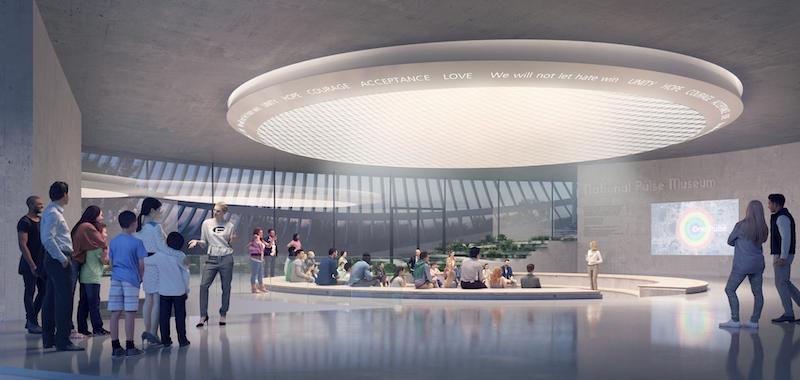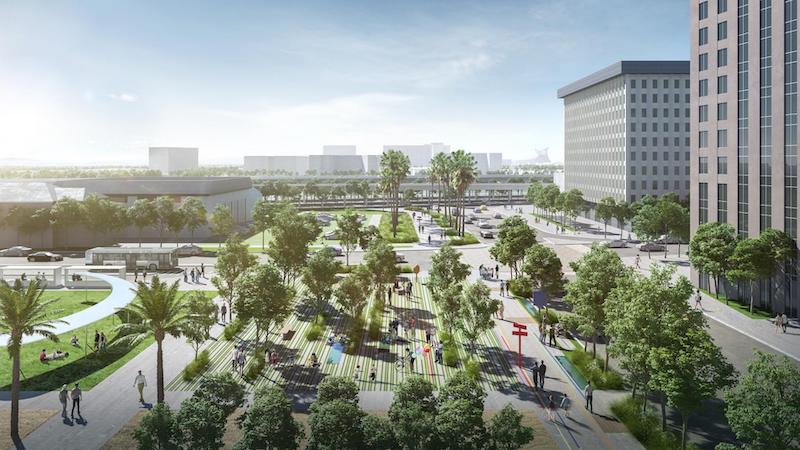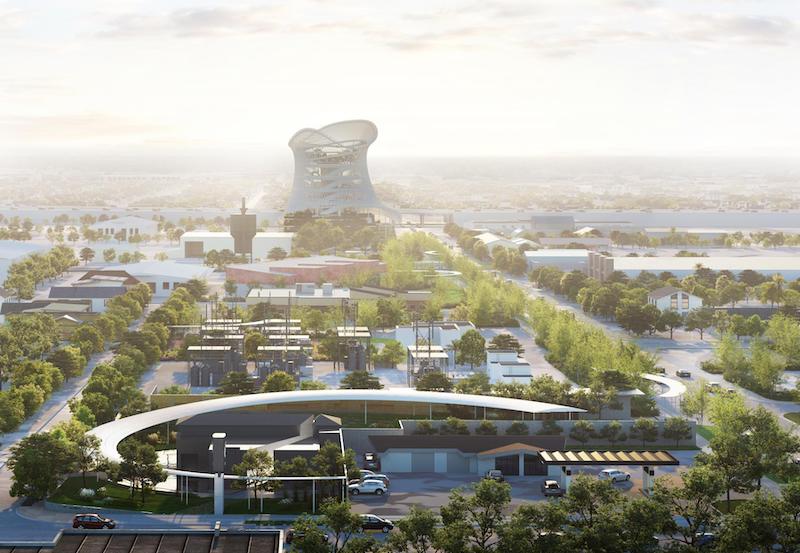After a seven month design competition that comprised 68 entries and six shortlisted designs, the onePULSE Foundation (a nonprofit established by the owner of the Pulse nightclub after the mass shooting that took place) has selected Coldefy & Associés’ design for a permanent memorial and museum.
The multi-level, open-air structure features a shallow reflecting pool that surrounds the original Pulse nightclub building. A palette of 49 colors, for the 49 victims of the shooting, lines the reflecting pool basin and radiates towards the public spaces and the reflecting pool leads to an outdoor garden planted with 49 trees. An adjacent space is dedicated to gathering and celebration.

The renewed West Kaley street provides a shaded connection to the new museum, which rises “like a budding flower” and signals the entrance to the Pulse district. Vertical gardens and public plazas create new community spaces and a rooftop promenade offers views of the memorial and the entire surrounding district.
See Also: A watchtower in Harlem, once a firefighter’s lookout, is restored as a landmark

A Survivors Walk on Orange Avenue leads from the memorial towards downtown and features interactive sculptures commemorating all those affected by the tragedy. In the future, promenades, bike paths, and a Pulse shuttle will connect to the train station and create walkable loops that will help spark the future growth of the neighborhood.
The entire project team consists of Coldefy & Associés with RDAI, HHCP Architects, Xavier Veilhan, dUCKS scéno, Agence TER, and Prof. Laila Farah.



Related Stories
| Jan 11, 2014
Getting to net-zero energy with brick masonry construction [AIA course]
When targeting net-zero energy performance, AEC professionals are advised to tackle energy demand first. This AIA course covers brick masonry's role in reducing energy consumption in buildings.
| Dec 30, 2013
Calatrava facing legal action from his home town over crumbling cultural complex
Officials with the city of Valencia, Spain, are blaming Santiago Calatrava for the rapid deterioration of buildings within its City of Arts and Sciences complex.
| Dec 19, 2013
Mastering the art of crowd control and visitor flow in interpretive facilities
To say that visitor facility planning and design is challenging is an understatement. There are many factors that determine the success of a facility. Unfortunately, visitor flow, the way people move and how the facility accommodates those movements, isn’t always specifically considered.
| Dec 13, 2013
Safe and sound: 10 solutions for fire and life safety
From a dual fire-CO detector to an aspiration-sensing fire alarm, BD+C editors present a roundup of new fire and life safety products and technologies.
| Dec 10, 2013
16 great solutions for architects, engineers, and contractors
From a crowd-funded smart shovel to a why-didn’t-someone-do-this-sooner scheme for managing traffic in public restrooms, these ideas are noteworthy for creative problem-solving. Here are some of the most intriguing innovations the BD+C community has brought to our attention this year.
| Dec 6, 2013
French concert hall includes integrated musical elements [VIDEO]
La Métaphone, a concert hall in Ognies, France, is a 1,980-sm facility with the unique characteristic of being a structural musical instrument. The solar-powered building incorporates musical elements in its walls, which can be played by musicians inside or outside the facility.
| Dec 4, 2013
First look: Dubai's winning bid for World Expo 2020 [slideshow]
Dubai has been chosen as the site of the 2020 World Expo. HOK led the design team that developed the master plan for the Expo, which is expected to draw more than 25 million visitors from October 2020 through April 2021.
| Nov 27, 2013
BIG's 'oil and vinegar' design wins competition for the Museum of the Human Body [slideshow]
The winning submission by Bjarke Ingels Group (BIG) and A+ Architecture mixes urban pavement and parkland in a flowing, organic plan, like oil and vinegar, explains Bjarke Ingels.
| Nov 27, 2013
Wonder walls: 13 choices for the building envelope
BD+C editors present a roundup of the latest technologies and applications in exterior wall systems, from a tapered metal wall installation in Oklahoma to a textured precast concrete solution in North Carolina.
| Nov 26, 2013
Construction costs rise for 22nd straight month in November
Construction costs in North America rose for the 22nd consecutive month in November as labor costs continued to increase, amid growing industry concern over the tight availability of skilled workers.

















